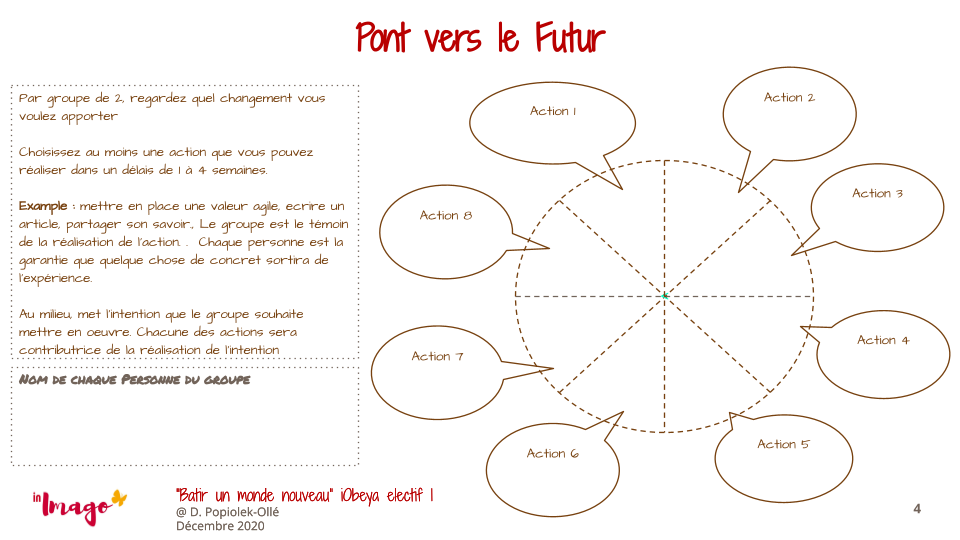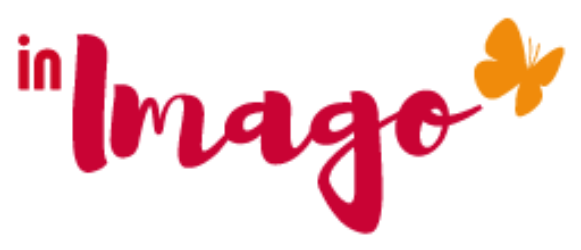This article brings together 3 essential principles of the Agile Manifesto, principles 9, 10 and 11.
These principles are the key to good team management and the guarantee of a valuable delivery. They are the team’s guides to synchronize and implement the useful action,
The complementarity inherent in these 3 principles makes long remarks unnecessary. This is why I have grouped them together here under the same article and declined according to the 3 usual focuses Intensio, Extensio and Mago.
Principle 9 – Continued attention to technical excellence and good design improve agility
Principle 10 – Simplicity (the art of maximizing the amount of work not done) is essential
Principle 11 – The best architectures, specifications and designs emerge from self-organized teams
Focus Intensio – Agile Team
From an Agile team perspective, what does excellence, simplicity and self-organization represent?
Principle 9 – What does continuous attention and technical excellence mean in Agile?
Here, the continued attention is a reminder that the team is focused on what it will deliver. Technical excellence goes without saying for an Agile team. The objective, as we will see in principle 10, is to maintain flexibility and simplicity of execution and use.
Here, technical excellence is a reminder of the team’s “commitment” to delivering products that work, even products that challenge. They carry with them a head start, a touch of innovation and never seem obsolete. This technical excellence leads the team in continuous learning, thus forging a curiosity and an enthusiasm to create a BBB product: Beautiful, Good and yet Basic, by an absolute answer to the need.
The answer to the need is the course maintained by the teams. The objective being the continuous delivery of added value. When added value is delivered, there is no need to specify more and occupy the teams. The product is finished and simply maintained.
As in a start-up, the product in the making brings pride and attention to the team. The latter, customer-oriented and continuous learning, always allows change, thus generating a continual renewal of its activity. In this, the team maintains its Agility.
Principle 10 – Simplicity (the art of maximizing the amount of work not done) is essential
This is my favorite principle. It is the essence of Agile and Lean to focus on added value in everything that is implemented.
Simplicity does not mean simplistic. To achieve simplicity, the team will purify all the functionalities as much as possible to retain only the essentials and offer their client a functional environment. The unnecessary is purely and simply deleted.
Simplicity invites the customer to appropriate the product and the developments in order to associate them with its context. The Agile team will make sure to offer them user journeys to take charge of the product. He will personalize, with or without the help of the first Agile team, the delivered product in order to bring his mark, his signature.
From a coach’s point of view, bringing teams to simplicity remains a challenge. The first reason being that we have been educated to “be perfect” and to do an impeccable job to avoid judgments and criticisms from our colleagues or superiors. The second reason is boredom. If a person on the team judges “to be under committed”, they will either continuously deliver unnecessary functionality or deny technical excellence in favor of poor delivery.
The art of the coach will be to encourage people to unlearn. Americans will talk about the Right to Make mistakes. This subject is the subject of the book: Fail fast, fail often– How losing can help you win- by Ryan Babineaux and John Krumboltz.
By agreeing to be wrong, or simply that their idea does not match or simply is not understood, the team can review their product. Enriched by this error, the product will be simplified, focused on the essential.
To easily engage teams, the Bridge to the Future makes it easy to engage teams.

Exercise to get you moving Agile
Material: A swivel chair, a bridge to the future, post-it
In the absence of a swivel chair, all you have to do is make a 360 ° turn on yourself.
Duration : 30 minutes, 2 to 12 participants
Unfolding :
Invite someone to sit in the middle of the room on the chair. Ask him to write the team goal on a post-it note and place the post-it under his chair, or under his feet.
Part 1- Invite the other members to guess the objective on the post-it. Excellence is achieved if all the written words are found by the team.
If the team finds, fine otherwise repeat.
Part 2- Reiteration
Repeat by inviting the person in the chair to accept responses close to their post-it or to direct responses by responding, hot or cold.
If nothing is found after 5 minutes, game abandonment.
Part 3- To set in motion
Ask participants what they lacked in the exercise to achieve excellence!
Place the post-it in the center of the circle, and ask participants to write an action to achieve the objective thus revealed.
Then invite team members to put their action post-it notes in one of the 8 boxes.
Each post-it is a path to achieve excellence represented by the post-it in the center. The wheel and its 8 spokes are as many possibilities to make, as many possible answers to satisfy the objective.
This often helps to understand the other’s point of view and find the best way to meet customer needs.
Validate the post-it (s) with the person in the center. And throw out the others. The goal is reached.
Principle 10- simplicity
The objective of Principle 10 is to get rid of unfinished tasks. If the goal is achieved and accept it as such. Do not overbid, do not develop in your corner.
Here, it’s about getting rid of leftover tasks at the end of the iteration. Dare to throw away what is not done!
Often it is too fine a breakdown which is the main reason or the false good idea (and if we did that it would be better, but it must be driven by the business …). This is the key to success, it aims to eliminate waste, as soon as it is produced.
The more you optimize the “work not done” seal, the closer you will come to the few really valuable features that offer the greatest business value. It’s like revealing the inner beauty of an artifact every time you polish its surface to remove dirt. In this way, the practice is truly an art. What this really means is that we need to focus on the features that would help the customer enjoy the “result”, and which may ultimately have no correlation with the number of features producing the “output”. In other words, simplicity for the customer will have to be supported by a coherent set of functionalities.
Xavier Pigeon will talk about the quality of the source code on his site, alerting us to the ease of “giving up value by focusing on quantity rather than quality, by delivering quickly instead of delivering early, by regularly delivering a lot instead. to continuously deliver good. A software of value is not the addition of its functionalities. Delivering value early is to deliver less by reducing the functional to the essential, never the quality to the minimum. “agile” are blunders built on this incomprehension. “
Extensio – Simplicity for the organization?
Principle 11 – The best architectures, specifications and designs emerge from self-organized teams.
From an organizational point of view, excellence, simplicity and self-organization, it is first of all a paradigm shift. Supporting a team to take useful action will lead management to set in motion. This phenomenon will lead to the implementation of a living, organic management.
Self-organization is key here. The company must allow the team to manage its product or software itself.
Management gives it the challenges to meet. The team sets up and coordinates its deliveries without any influence.
In the context of software development, this means, among other things, bottom-up estimation (from team to customer) and continuous planning allowing continuous delivery of added value. Peer pressure focuses on the development team’s ability to roll out a process and on putting the team in motion: tackling what needs to be done to achieve the goal in continuous delivery, not executing assigned tasks.
The team, through its organization, will thus limit the technical debt. The team taking into account the challenges of the company and that of its client as a business manager. The result, guided by their curiosity, being a guarantee of excellence.
In organizations, the implementation of self-organized teams comes up against 2 problems:
- the statu quo
- the existing processes
The status quo: very often top management does not want to put resources and a vision into the hands of a team without getting involved in the “how”. Here again, only personalized management coaching (accepted) will allow the establishment of a Top Down organization oriented towards cultural governance and not immediate results. Then leaving room for the teams to deliver.
The processes are also an obstacle to self-organization since they freeze everyone’s tasks, even going as far as R.A.C.I * and a fair distribution of the company’s costs.
*R.A.C.I :responsible, accountable, consulted and informed; where each individual knows exactly what role is assigned to him / her in the organization. Creativity and innovation being a risk to be mastered …
Focus MAGO – you said Agile ?
From an individual point of view, what represent excellence, simplicity and self-organization?
These 3 principles are above all an individual choice. No one can be coerced. It is an individual effort to INTEGRATE simplicity, autonomy or self-organization and even technical excellence into one’s personal organization. The absence of hierarchy and an uncompromising acceptance of the complementarity of team members as vital to continued good functioning is a challenge for everyone. It is also a questioning of a certain comfort in which everyone is finally content to do their task without being really responsible for the smooth running of the process.
For the team to function, each individual must be humble and accept a confrontation of points of view for collective benefit. Everyone is also committed to the end result. Which is a real challenge. This approach is detailed in:
The 4 levers of your in business transformation by Dominique Popiolek-Ollé
Read also: Merchandise deceptions for poorly initiated Agile Transformations by Xavier Pigeon
Why Employees Love Scrum and Bosses Don’t! by Dominique Popiolek-Ollé
The oscillating ball: the necessary impetus for effective management by Dominique Popiolek-Ollé
This article was designed and written by Dominique Popiolek, transformation leader and professional coach.

